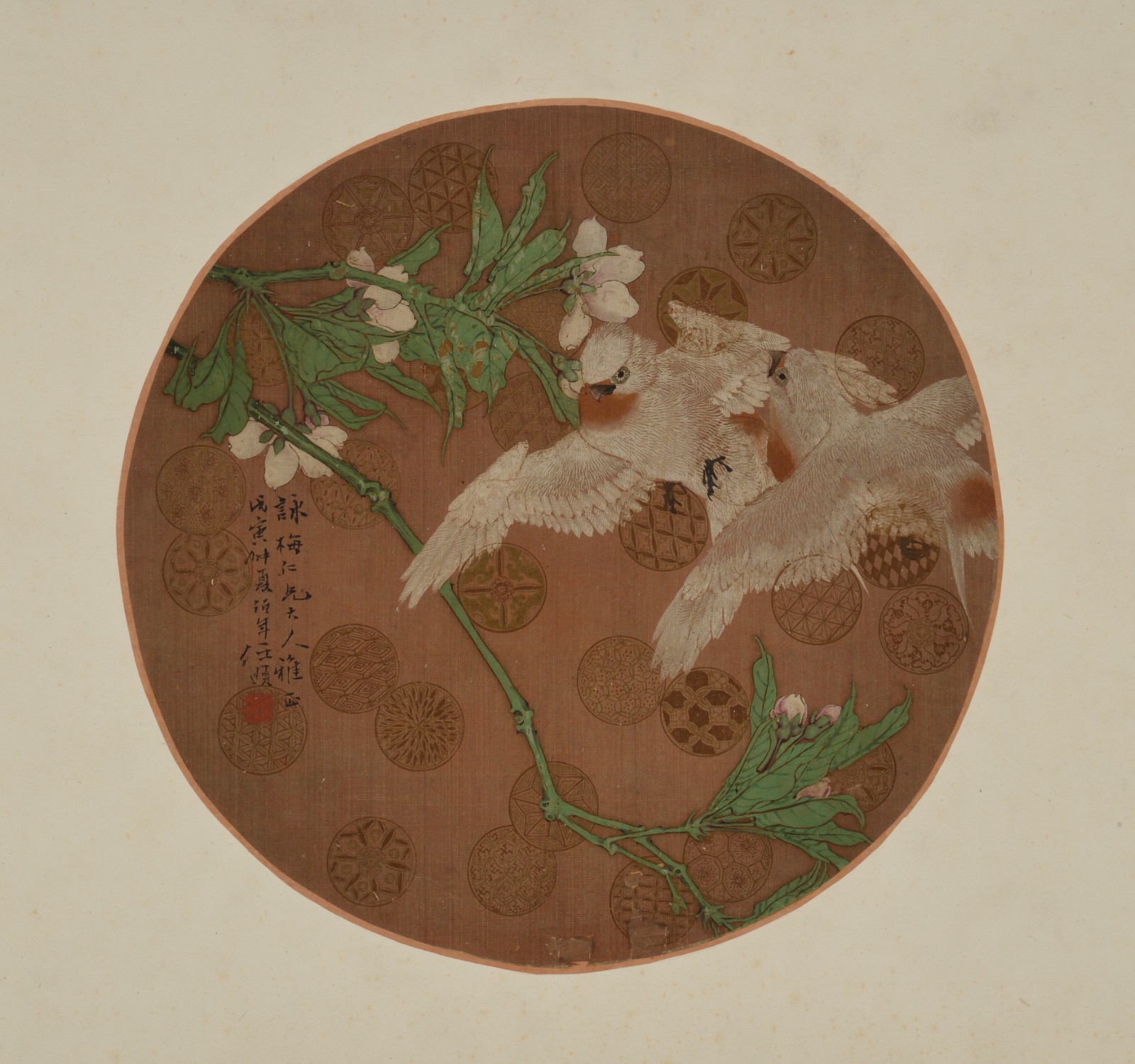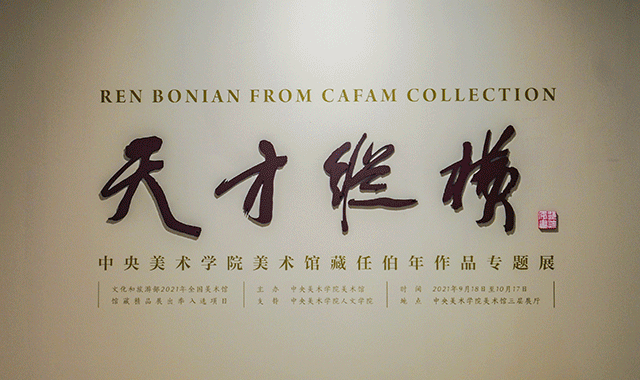
The Shanghai School of Painting occupies an important position in the history of modern Chinese fine arts, within which Ren Bonian is regarded as a great master who invents the future while building upon the past. “The Versatile Master: Research Exhibition of Ren Bonian Paintings in CAFAM Collection” was unveiled at CAFA Art Museum (abbr. CAFAM) on September 18, 2021, which showcases the historical perspective and unique achievements of this “genius” artist in the process of developing Chinese paintings from traditional modes to a modern transformation.
Ren Yi (1840-1896), also known as Ren Run, Ren Bonian and Ren Heshang, was from Shangyin, Zhejiang (today’s Shaoxing). He was one of the renowned representative painters of the Shanghai School (haipai). He was an unprecedented versatile artist who mastered all kinds of skills, and was good at different genres of paintings from figure to flower-and-bird and landscape. He also blended a use of sketch and watercolor skills in traditional Chinese painting skills.
Ren Bonian, Amitabha Buddha
Under the influence of his father Ren Hesheng who earned his living as a rice trader, Ren Bonian had already established a good eye for details, and outstanding sketching skills in his childhood, but he did not become a professional artist until he learned from Ren Xiong and Ren Xun. His early painting style was influenced by the heritage of Chen Hongshou, and even the double hook method of the Song dynasty painters. Later he absorbed Bada Shanren’s skill of “centered tip of a brush held from a suspended wrist” and Hua Yan’s original philosophical thinking, then he gradually formed his own artistic style. The first section of this exhibition, “Learning from Tradition” includes highlights of these masters who have influenced Ren Bonian's development. Ren Jin, a son of Ren Bonian pointed out that Ren Bonian had learned from Chen Hongshou in the inscription of a small-size “Amitabha Buddha” by Ren Bonian at the entrance of this exhibition. While Fei Danxu’s “Red Dress in Snow” represents the portrait painting of the elegant lady that Ren Bonian (alias Xiaolou) pursues in his early years. Ren Bonian started to learn from Zhu Da when he was middle aged, the full composition and refined strokes that Zhu Da was expert in, reflects the direction that Ren Bonian developed in his later flower-and-bird paintings.

Fei Danxu, Red Dress in Snow, Qing dynasty, ink and color on silk, 123×33cm

Chen Chun, White Lotus (scroll), Ming dynasty, ink and color on paper, 50.7×27.3cm

Hua Yan, Birds Gathering under Willow and Peach Blossoms (scroll), Qing dynasty, ink and color on paper, 172.5×93cm
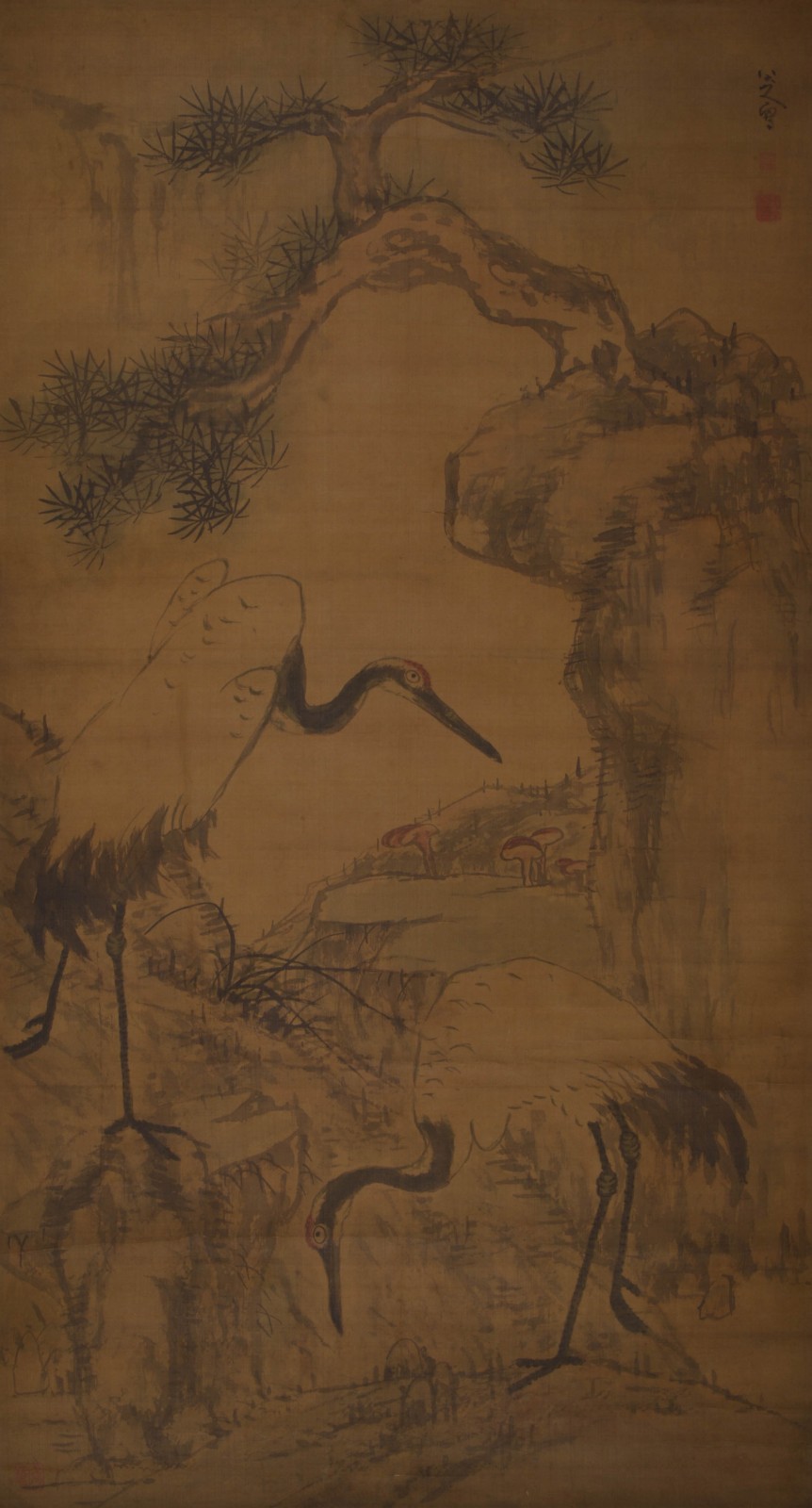
Zhu Da (Bada Shanren), Pine, Crane, Iris and Stone (scroll), Qing dynasty, ink and color on silk, 188×102cm
Being an iconic figure in the early and later transitions in the Shanghai School of Painting, Ren Bonian also inherited the characteristics of senior painters in this school, especially two predecessors, Ren Xiong and Ren Xun, together are regarded as the “Three Ren in Shanghai School of Painting.”

Ren Xiong, Offering Longevity, 1850, ink and color on silk, 172×280cm
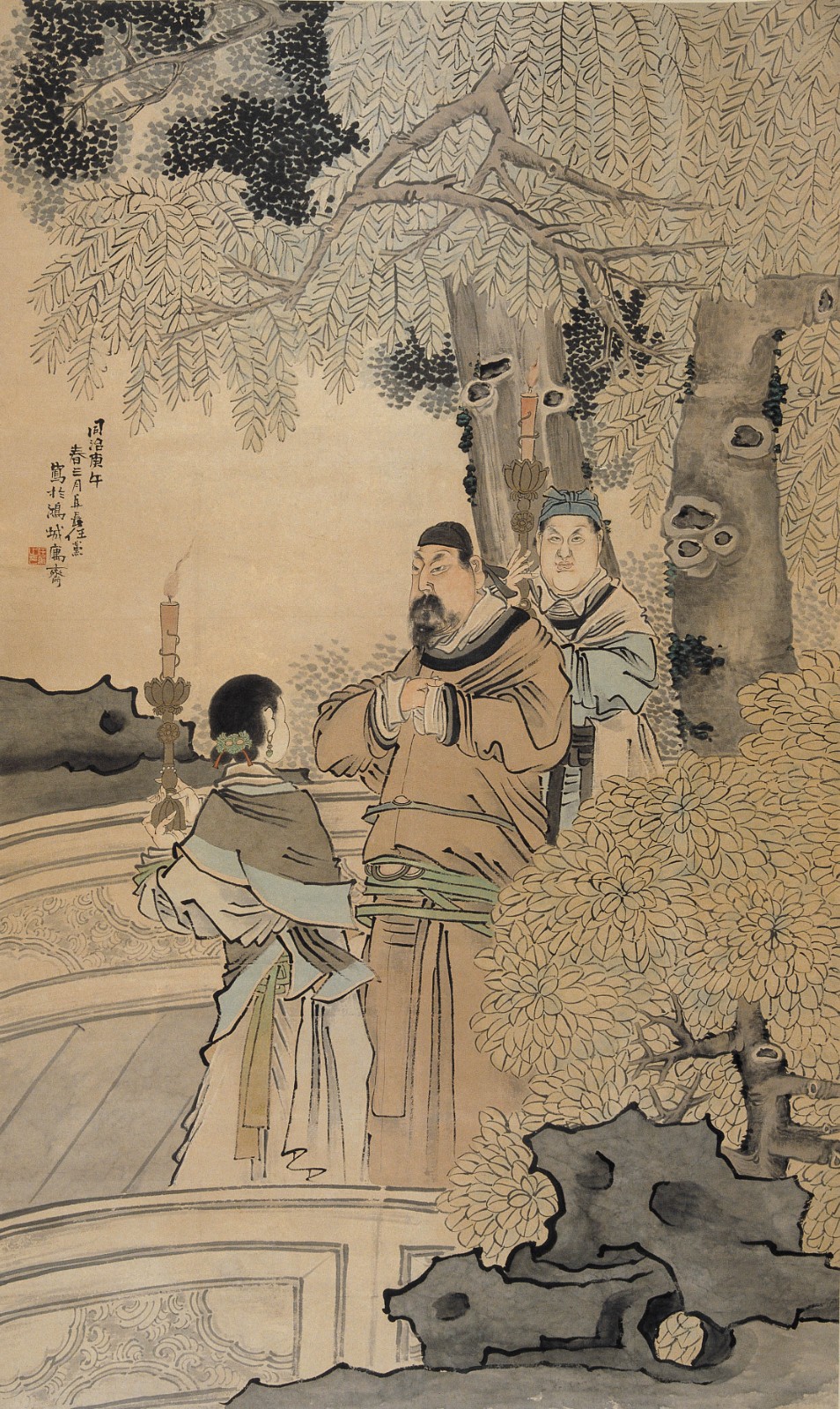
Ren Xun, Holding Candles, 1870, ink and color on paper, 204×121cm
“An Outstanding Artist of His Time” as the second section of this exhibition retrospects the oeuvre of Ren Bonian with 40 (series)of paintings from various periods and fields that reveal the diversified development of this “genius” in the Shanghai School of Painting. His figure paintings combine meticulous painting with figurative depictions, in a more expressive and straightforward way, they reflect the manners and expressions of figures. “The Portrait of Heng Yun Shan Min While Begging” reflects Hu Gongshou, who was already well-known in the painting circle of Shanghai at that time. Hu often wrote inscriptions for Ren Bonian’s paintings and they usually collaborated on creations. Hu supported Ren and helped him to get a firm foothold in Shanghai. In a meticulous way, Ren Bonian outlined the facial characters of Hu and drew a cloth gown. In the basket that Hu holds there are book scrolls and plum sticks, which indicates the typical seclusion of traditional Chinese literati, and further reflects the painter’s respect for this benefactor. Another “Portrait of Yicheng”, outlines the figure with a few strokes, which comprehensively conveys the characteristics of Ren Bonian’s portrait paintings. Among the themes such as “Portrait of Zhong Kui” which is popular in folk culture (it is usually hung on the day of the Dragon Boat Festival), we can find the slick strokes and three-dimensional effect of the rendering effect, which reflects how Ren Bonian as a painter of Shanghai School meets the needs of the painting market at that time.

Ren Bonian, The Portrait of Heng Yun Shan Min While Begging (scroll), 1868, ink and color on paper, 147×42cm
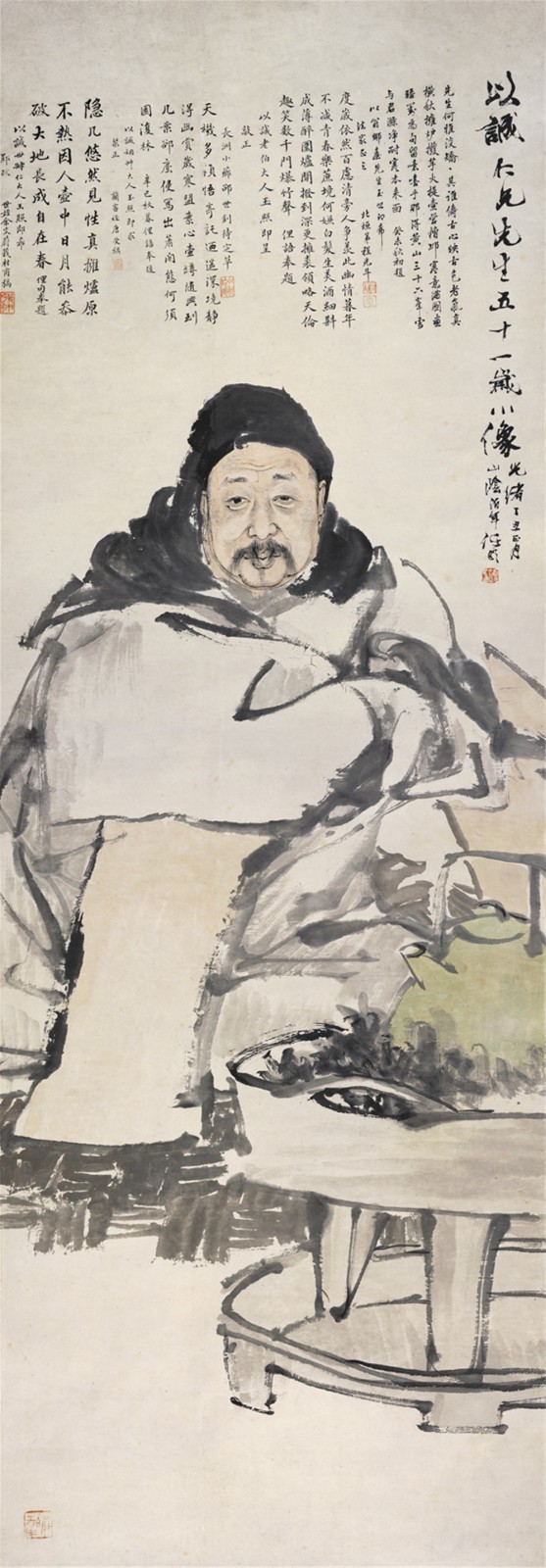
Ren Bonian, Portrait of Yicheng, 1877, ink and color on paper, 102 ×45cm
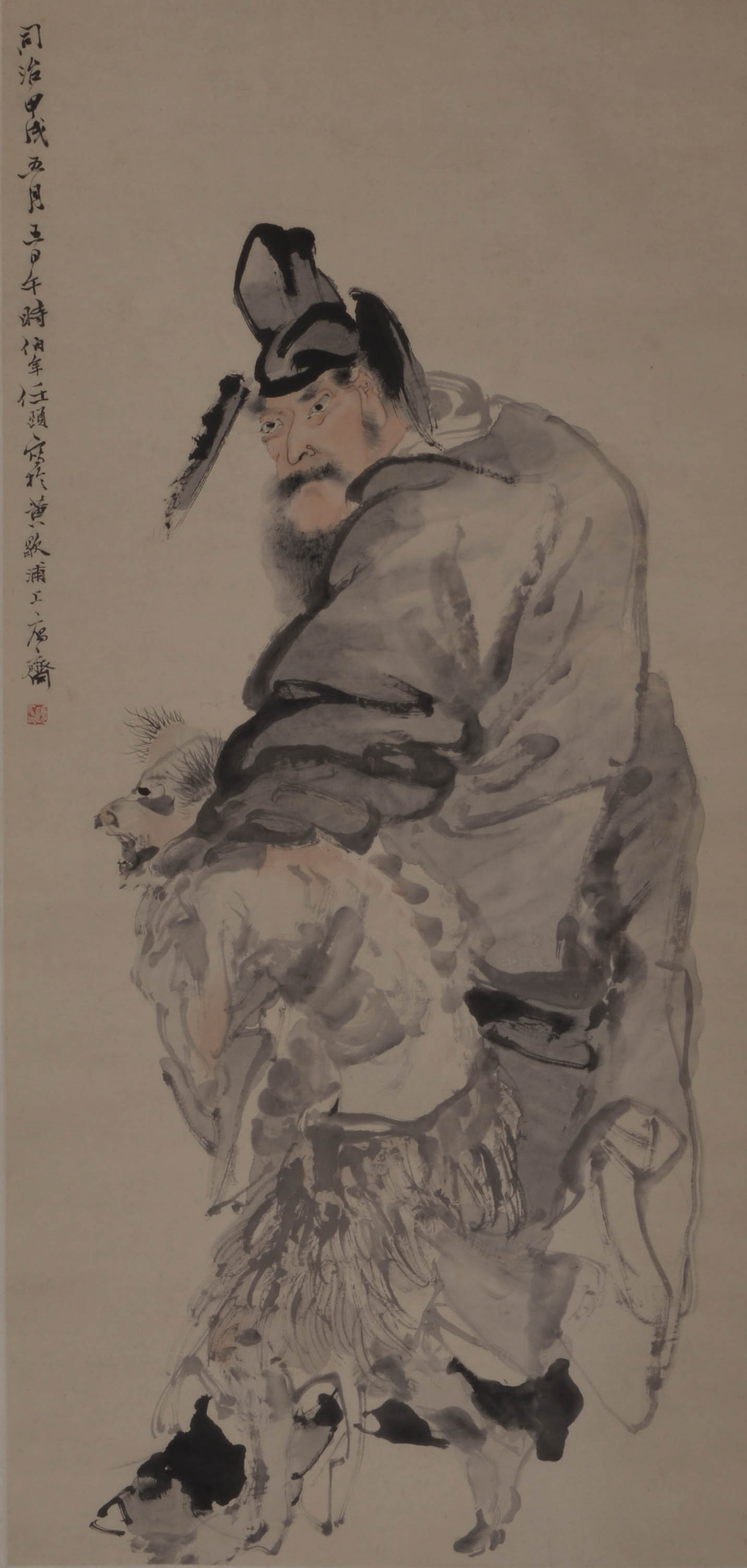
Ren Bonian, Portrait of Zhong Kui, 1874, ink and color on paper, 135 ×64cm
Flower-and-bird paintings constitute an important part of Ren Bonian’s oeuvre. A series of fans painted by Ren Bonian are also displayed in the exhibition hall. When he arrived in Shanghai, it was Hu Gongshou who found a job for him in the Fan Shop of Guxiangshi. Various kinds of sprinkled gold, lacquer and satin fans, in addition to imitating the styles of Chen Hongshou and painters in the Song Dynasty. These paintings depict plum blossoms, peonies, roses, orchids, chrysanthemums, loquats, camellias, parrots, sparrows, starlings, wax finches, herons, black-bone chickens, waxwing birds and so on, they are mostly vivid gestures captured by Ren’s careful observation of life, as they jointly reflect his passion for the vibrant natural world. “Phoenix Dwells the Old Green Parasol Tree Branch” shows his state when he aged. It was painted in 1889 when he suffered from poor health and pain due to long-term addiction to alcohol and tobacco.
Ren Bonian, White Parrot, 1878, Ink and color on satin fan, Diameter 28.5cm

Ren Bonian, Fan IV, 1868, Ink and color on paper, 29×58cm

Ren Bonian, Phoenix Dwells the Old Green Parasol Tree Branch, 1889, Ink and color on paper, 227× 114cm
Ren Bonian has inspired many painters following his generation. His oeuvre was a milestone for the revolution of Chinese painting, and also deeply influenced Chinese painting in the 20th century. Mr. Xue Yongnian once commented that Ren’s work “l(fā)earning from the tradition while absorbing the west.” Ren could acutely observe the new artistic concepts, and search for an original art language. This is also how China is seeing traditional Chinese culture now: it encourages the dialectical review of tradition and active development of new art styles, “using the ancients’ rules to make our own world.” Another set of Quad Painting features stories of figures, excels in ingenious composition and rich details, which highlights how Ren deals with obviously important commercial tasks.
The last section “Century-old Legacy” starts with a set of Ren Bonian’s paintings, aiming to highlight Ren Bonian’s influence on the modern Chinese painting scene. In this set of sketches, there is a seal by Japanese sinologist Nagao Uzan who made friends with Wu Changshuo, and a postscript by Ren Bonian’s disciple Wang Yiting. This part presents the works of Wu Changshuo, Wang Yiting, Ni Tian, Wang Mengbai, Chen Banding and others. They were either taught by Ren or they tried to figure out ink and brush techniques in the work of Ren. For example, Wu Changshuo became another representative of the Shanghai School with his calligraphy and paintings, and Ni Tian learned his character modeling to promote the Ren’s school.
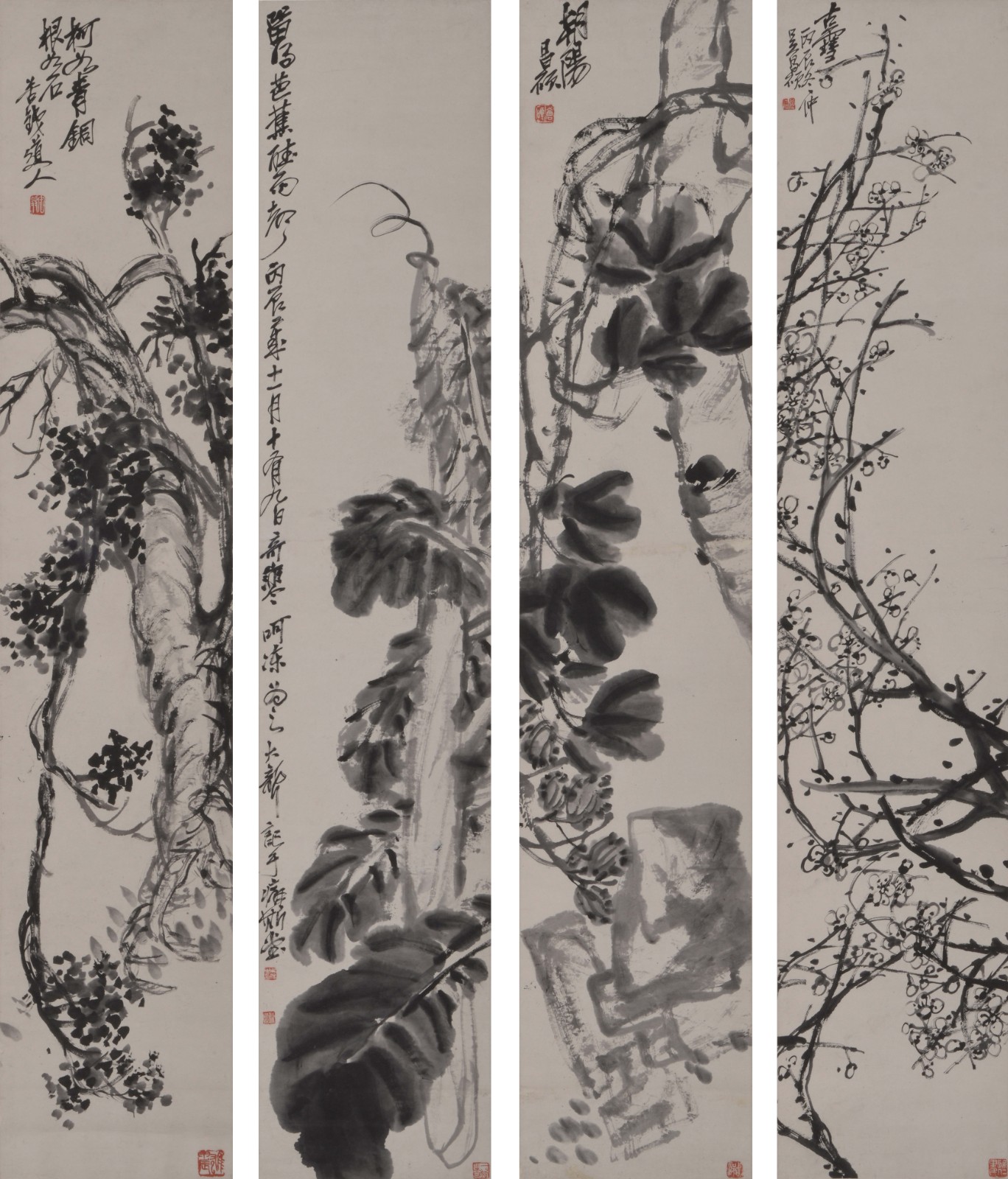
Wu Changshuo, Banana Leaves, Pine and Plum Blossom, 1916, ink on paper, 134.5× 27cm× 4
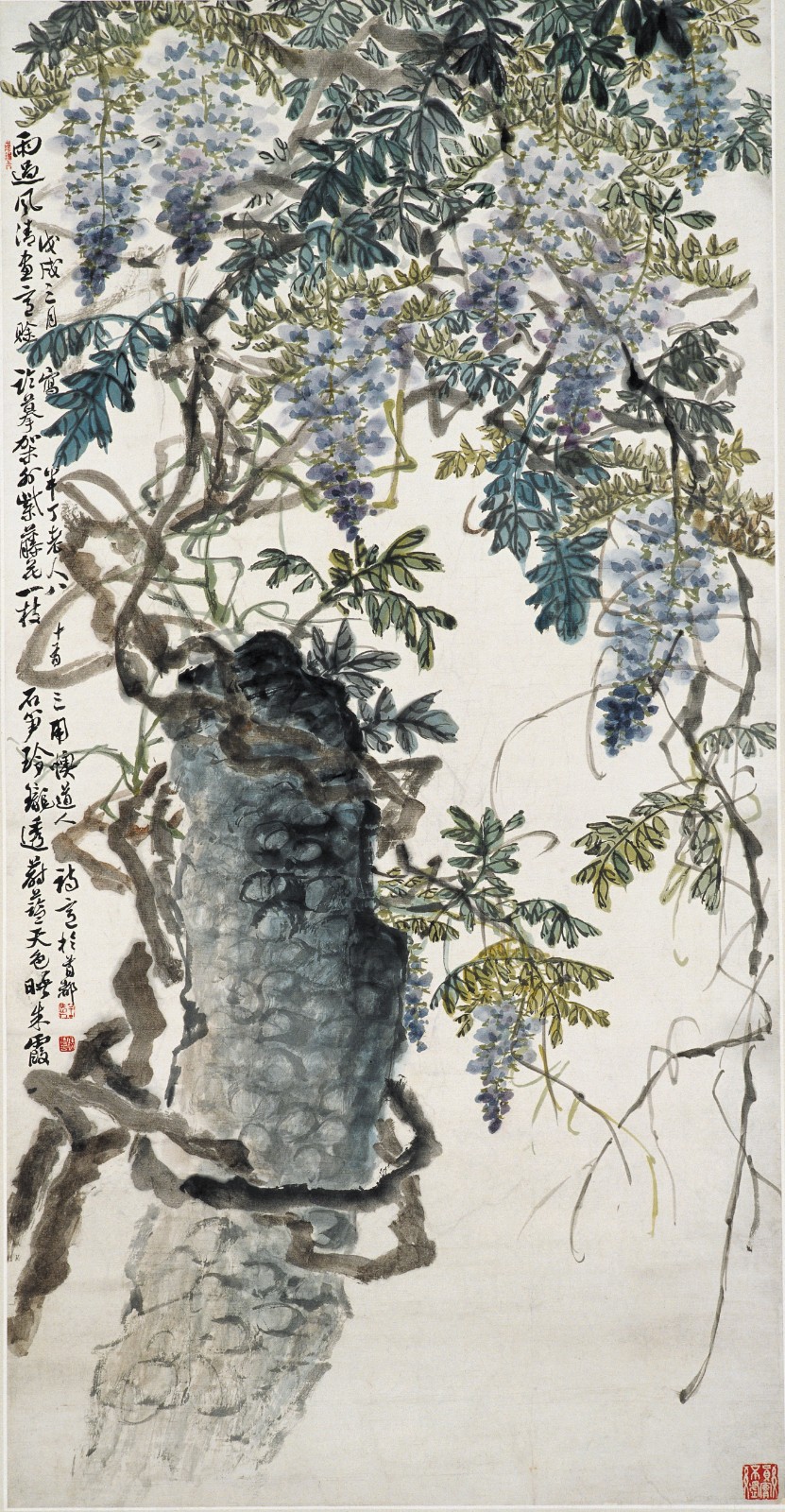
Chen Banding, Painting of Wisteria, 1958, ink and color on paper, 107 × 55cm
Xu Beihong’s admiration for Ren Bonian’s art is of far-reaching significance in the New Chinese Painting Movement. In the improvement concept of realism in Chinese painting advocated by Xu, he took Ren Bonian’s artistic exploration of combining realism with freehand brushwork, tradition with innovation as a useful reference for the development of Chinese painting in the 20th century, and brought this to his art teaching of Chinese painting in Beiping. The portrait of “Zhong Kui” displayed in the exhibition hall intuitively shows the relationship between the two modern masters of art.
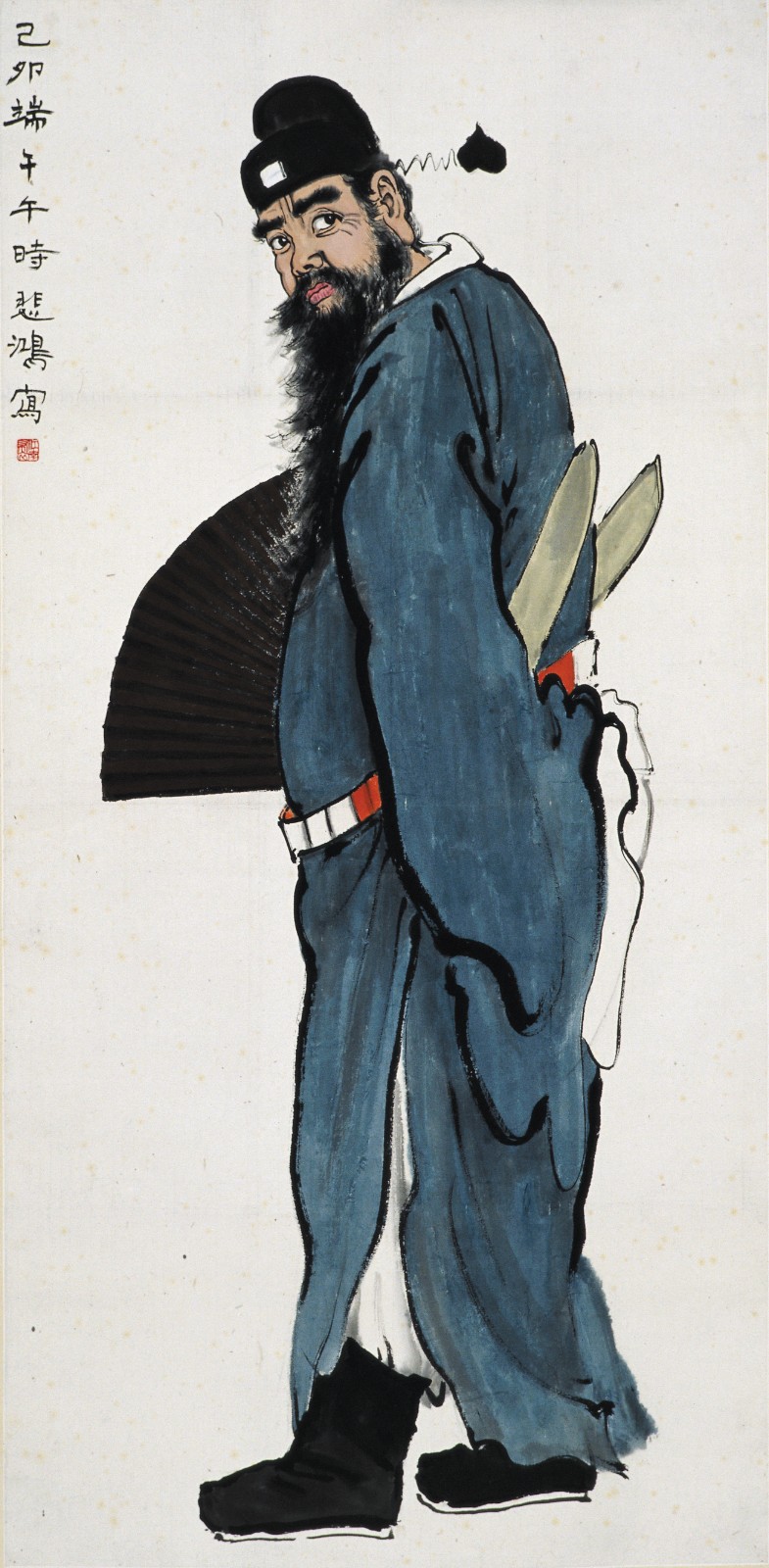
Xu Beihong, Zhong Kui, 1939, ink and color on paper, 112 ×55cm
How to look at Ren Bonian’s time-transcending accomplishment in a new light, how to inspire CAFA people and the public to learn from Ren’s work, is one of the original purposes of the exhibition. It retrospects Ren Bonian’s art against a historical background, showcasing Ren’s works in three chapters under the theme “The Versatile Master,” and reviews his accomplishments at the crossroad between ancient and modern, East and West. It is intended to portray a landscape of Chinese painting across 500 years from Ming and Qing dynasties to modern times through Ren Bonian’s art, highlighting his outstanding artistic achievement while sorting out a list of masters he had drawn inspiration from. While unraveling the logic behind CAFA’s collection of historical Chinese paintings, and the relationship between the collection and teaching of Chinese painting, the exhibition re-interprets how Ren Bonian’s works mixed traditional and modern elements and trigger the audience to think about how an individual artist pushed for a revolution in art history.
Text by Luo Yifei, ed. and trans. by Sue/CAFA ART INFO
Photo by Hu Sichen and CAFA Art Museum
Courtesy CAFA Art Museum
About the exhibition
The Versatile Master: Research Exhibition of Ren Bonian Paintings in CAFAM Collection
 Dates: September 18-October 17, 2021
Dates: September 18-October 17, 2021
Venue: The Third Floor of CAFAM
Organizer: CAFA Art Museum
Supporting Organization: School of Humanities, CAFA



